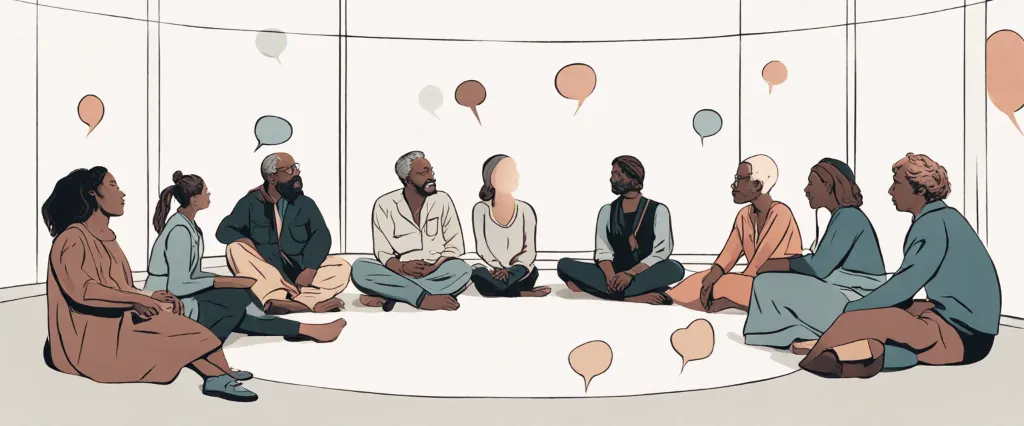
Are you ready to embark on a transformative journey of understanding human behavior and organizational culture? If so, get ready to dive into the world of The Arbinger Institute, an internationally renowned consulting and training firm. With their groundbreaking research and insights, The Arbinger Institute has become a leader in the field of mindset and behavior change, helping individuals, teams, and organizations achieve exceptional results. Join us today as we delve into the captivating interview with the brilliant minds behind The Arbinger Institute, exploring their compelling theories and strategies for transforming lives, relationships, and workplaces.
The Arbinger Institute is a leading global organization that specializes in helping individuals, teams, and organizations achieve sustainable, meaningful results by transforming their mindset and approach to work and relationships. With over 40 years of experience and a proven methodology, the institute has gained recognition for its impactful training, coaching, and consulting services.
Founded in 1979 by Dr. C. Terry Warner, The Arbinger Institute emerged from a desire to address the underlying causes of organizational and personal problems rather than just the symptoms. Recognizing that most conflicts and inefficiencies stem from a lack of awareness and understanding of one’s impact on others, the institute developed innovative approaches to facilitate positive change and foster a more empathetic, accountable, and effective way of being and interacting.
The institute’s groundbreaking work is based on the principles outlined in the best-selling books, “Leadership and Self-Deception” and “The Anatomy of Peace.” These publications, along with others, have not only influenced countless individuals across various industries but also transformed the cultures of numerous organizations worldwide.
The Arbinger Institute’s philosophy revolves around the concept of an “outward mindset”—a mentality focused on considering the needs, objectives, and perspectives of others. By shifting from a self-centered to an other-centered viewpoint, individuals and organizations can break free from self-deception, misunderstandings, and destructive patterns, ultimately fostering collaboration, innovation, and overall success.
Through highly engaging and evidence-based workshops, coaching sessions, and support material, The Arbinger Institute equips individuals and teams with the tools, knowledge, and skills necessary to apply an outward mindset in their personal and professional lives. The institute’s approach transcends traditional training programs, as it seeks to create lasting behavioral change that extends beyond the training room.
Whether it is improving communication and trust within teams, enhancing leadership effectiveness, resolving conflicts, or driving organizational transformation, The Arbinger Institute offers comprehensive solutions tailored to the unique needs and objectives of each client. With a team of experienced consultants and facilitators, the institute has successfully partnered with organizations from diverse sectors, including corporations, governments, non-profits, and educational institutions.
As a result, The Arbinger Institute has established an impressive track record of assisting clients in achieving remarkable improvements in productivity, morale, customer satisfaction, and overall organizational performance. With their unwavering commitment to personal and organizational transformation, The Arbinger Institute continues to be at the forefront of driving positive change in the world.
10 Thought-Provoking Questions with The Arbinger Institute
1. Can you provide ten The Anatomy of Peace by The Arbinger Institute quotes to our readers?
The Anatomy of Peace quotes as follows:
a) “The problem is always one of the heart.”
b) “Our enemies are not evil, but merely mistaken.”
c) “The greatest wars are always fought within ourselves.”
d) “Peace is not the absence of conflict, but the presence of understanding.”
e) “When we see others as objects, we blind ourselves to their humanity.”
f) “When we give ourselves to anger, we lose sight of peace.”
g) “Seeking to understand is the first step towards resolving any conflict.”
h) “Peace begins with each individual’s commitment to change.”
i) “We cannot create peace in the world if we don’t have peace within ourselves.”
j) “Hurt people hurt people; healed people heal people.”
2.What inspired The Arbinger Institute to write “The Anatomy of Peace”? Can you discuss the motivations behind delving into the dynamics of conflict and peacemaking?
The Arbinger Institute was inspired to write “The Anatomy of Peace” because of our deep concern for the pervasive conflict and lack of peace in the world. We recognized that many conflicts arise from the way individuals perceive and interact with others, often fueling a destructive cycle. We wanted to delve into the dynamics of conflict and peacemaking in order to provide insights and practical tools that could help individuals and organizations address these underlying issues.
Our motivation stems from a belief that there is a need for a shift in mindset, from one of self-justification and a focus on “righteousness” to one of genuine understanding and empathy towards others. We wanted to explore how this shift can foster meaningful and sustainable peace, both within ourselves and in our relationships.
By delving into these dynamics, we hoped to offer a way for readers to not only navigate their personal conflicts more effectively but also embrace a more peaceful and inclusive approach to their interactions with others. Our goal was to empower individuals and communities to transform their relationships and contribute towards a more peaceful world.
3.”The Anatomy of Peace” offers insights into resolving conflicts and fostering peace. How do you propose individuals and organizations can apply the principles outlined in your book to transform their relationships and promote reconciliation?
At The Arbinger Institute, we believe that “The Anatomy of Peace” provides invaluable insights into conflict resolution and promoting peace. To apply the principles outlined in our book and transform relationships, individuals and organizations must start by adopting a mindset of seeing others as people with their own needs, fears, and desires.
Firstly, recognizing the role of our own self-justifying mindset is crucial. We must understand how our own internal conflicts reflect in our external interactions. By shifting our mindset from seeing others as objects to understanding their perspective, we can pave the way for reconciliation.
Secondly, we propose the practice of contextual empathy. This requires actively listening to others, seeking to understand their story, and creating a safe environment for open dialogue. Through genuine empathy, we can foster trust and openness, the foundation for resolving conflicts.
Lastly, applying the principles outlined in our book requires individuals to take responsibility for their impact on situations and to make meaningful changes in their behavior. Small acts of kindness and acts of accountability can have a significant positive impact, ultimately transforming relationships and promoting a lasting peace.
By adopting these principles and applying them consistently, individuals and organizations can break the cycle of conflict and promote reconciliation, leading to transformative and harmonious relationships.
4.Your book emphasizes the importance of shifting from a mindset of conflict to a mindset of peace. Can you share examples from “The Anatomy of Peace” that illustrate practical strategies for adopting a peace-oriented perspective in interpersonal dynamics?
In “The Anatomy of Peace,” we provide practical strategies for adopting a peace-oriented perspective in interpersonal dynamics. One example is the concept of changing our heart. The book shares a powerful story about a father and son struggling to connect with each other. By realizing the destructive nature of their conflicted mindset, they recognized the need to shift to a more peaceful perspective. Through this realization, they were able to change their hearts and approach each other with empathy and understanding.
Another practical strategy is the importance of staying out of the Box. The Box refers to a state of self-justification, blame, and judgment. By recognizing when we are in the Box and actively choosing to step out of it, we can start to see others as individuals with valid perspectives. This shift in mindset allows for better communication, collaboration, and peaceful resolution of conflicts.
Additionally, the book emphasizes the significance of developing a “heart at peace” as a personal discipline. This involves actively practicing peace and consistently choosing actions and words that promote understanding and harmony in our interactions.
By following these practical strategies, individuals can successfully shift their mindset from conflict to peace, fostering healthier and more positive interpersonal dynamics.

5.In “The Anatomy of Peace,” you explore the role of self-deception in perpetuating conflict. What techniques or approaches do you recommend for individuals to become more aware of their own self-deceptive patterns and break free from them?
In “The Anatomy of Peace,” we shed light on the detrimental impact of self-deception on perpetuating conflict and provide valuable insights into breaking free from such patterns. To help individuals become more aware of their own self-deceptive tendencies and ultimately overcome them, we recommend the following techniques and approaches:
1. Mindfulness: Developing a mindful approach to self-reflection helps individuals recognize their thoughts, emotions, and actions more objectively. This self-awareness is crucial in identifying and challenging self-deceptive patterns.
2. Empathy: Practicing empathy allows individuals to step outside their own perspective and genuinely consider the perspectives and feelings of others. By doing so, they can challenge their self-deception and adopt a more compassionate and understanding stance towards others.
3. Self-inquiry: Engaging in regular self-inquiry is a powerful tool to uncover one’s own biases, prejudices, and self-deceptive narratives. It involves asking ourselves probing questions and seeking honest answers, which enables us to challenge and transcend our own barriers.
4. Conflict resolution training: Participating in conflict resolution workshops or training programs equips individuals with the necessary skills to navigate conflicts effectively. These programs often focus on self-reflection, empathy building, and communication techniques vital for breaking free from self-deception and fostering productive dialogue.
By embracing these techniques and approaches, individuals can enhance their self-awareness, challenge self-deception, and pave the way for more peaceful and harmonious relationships. Ultimately, this self-transformation contributes to building a world with less conflict and more understanding.
6.”The Anatomy of Peace” advocates for empathy and understanding as key elements of peacemaking. How can individuals cultivate empathy and compassion towards others, even in the midst of conflict or disagreement?
At The Arbinger Institute, we believe that cultivating empathy and compassion towards others, even in times of conflict or disagreement, is vital for effective peacemaking. To develop these qualities, individuals can take several steps. Firstly, it is important to acknowledge and challenge our own inner prejudices and biases, recognizing that our perspective may not always be the only valid one. Engaging in active listening and truly seeking to understand the other person’s point of view is also crucial. This involves setting aside our own judgments and assumptions and genuinely empathizing with their experiences and feelings. Additionally, practicing self-reflection to identify our own contribution to the conflict is essential. By taking responsibility for our actions and attitudes, we can promote a more peaceful and compassionate atmosphere. Finally, choosing to respond with kindness and respect, even when faced with hostility, can significantly shift the dynamics of any dispute. Ultimately, developing empathy and compassion requires intentional efforts to transcend our own egocentric tendencies and truly see and value the humanity in others.
7.Your work underscores the significance of addressing underlying fears and insecurities in resolving conflicts. What guidance would you offer to individuals seeking to address the root causes of their conflicts and build lasting peace in their relationships?
At The Arbinger Institute, we acknowledge the critical role that addressing underlying fears and insecurities plays in resolving conflicts and establishing lasting peace in relationships. To individuals seeking guidance in this pursuit, we offer the following suggestions.
Firstly, cultivate self-awareness by examining your own fears and insecurities. Reflect on how these might be influencing your behavior and contributing to conflict. This process of self-reflection allows you to take responsibility for your role in the conflict and develop empathy for others.
Secondly, actively listen and seek to understand the perspectives and emotions of those involved in the conflict. By genuinely acknowledging and validating their fears and insecurities, you can foster an environment of trust and create space for an open dialogue.
Thirdly, practice empathy and compassion towards yourself and others. This begins with understanding that everyone is dealing with their own fears and insecurities. By approaching conflicts with a mindset of shared humanity, you can begin to break down walls and build bridges.
Lastly, commit to ongoing learning and personal growth. Engage in workshops, read relevant literature, or seek professional support to further develop your skills in addressing conflicts and fostering lasting peace in your relationships.
By addressing underlying fears and insecurities, individuals can navigate conflicts with a renewed understanding, empathy, and intention towards creating lasting peace in their relationships.
8.”The Anatomy of Peace” encourages individuals to see others as people rather than objects. How can individuals shift their perspective to recognize the humanity and inherent worth of those with whom they are in conflict?
In “The Anatomy of Peace,” we emphasize the importance of recognizing the humanity and inherent worth of individuals with whom we are in conflict. Shifting one’s perspective requires a deliberate and conscious effort:
1. Self-reflection: Begin by examining your own biases, assumptions, and judgments. This introspection helps to identify any negative patterns of thinking that dehumanize others.
2. Empathy and humility: Cultivate empathy by putting yourself in the other person’s shoes and seeking to understand their needs, fears, and aspirations. Approach the conflict with humility, acknowledging that you may not fully understand their perspective.
3. Active listening: Give the other person an opportunity to express themselves fully and without interruption. Truly listen and seek to understand their point of view, even if you disagree. This validates their humanity and encourages a more constructive conversation.
4. Common ground: Look for shared goals, interests, or values to create a foundation for resolution. Focusing on commonalities reminds us of our shared humanity and can bridge the gap between conflicting parties.
5. Practice compassion: Treat others with kindness, respect, and compassion, regardless of the disagreement. Acknowledge their worth as human beings, separate from the conflict itself.
By consciously engaging in these practices, individuals can shift their perspective and recognize the humanity in others, fostering a more peaceful and constructive approach to conflict resolution.
9.As authors deeply engaged in the study of conflict resolution and peacemaking, what advice or insights would you offer to individuals and communities seeking to cultivate a culture of peace and understanding in their personal and professional lives?
As authors deeply engaged in the study of conflict resolution and peacemaking, we offer the following advice and insights for individuals and communities seeking to cultivate a culture of peace and understanding:
1. Develop self-awareness: Begin by recognizing your own biases and prejudices. Embrace a mindset of humility and self-reflection to foster personal growth and understanding.
2. Empathize and listen actively: Seek to understand others by listening attentively and empathetically. Put yourself in their shoes to appreciate their perspectives and experiences.
3. Communicate effectively: Use clear and respectful communication, focusing on feelings and needs rather than blame or accusation. Strive for open dialogue that encourages mutual understanding and collaboration.
4. Build trust and strengthen relationships: Trust is the foundation of any peaceful and understanding culture. Foster trust by honoring commitments, being reliable, empathetic, and maintaining confidentiality.
5. Seek common ground: Instead of focusing on differences, actively look for shared values and goals. Building on commonalities creates opportunities for collaboration and mutual benefit.
6. Practice forgiveness and reconciliation: Let go of past grievances and resentments. Cultivate forgiveness as a means to heal relationships and promote harmony.
7. Commit to ongoing learning: Continuously educate yourself about conflict resolution techniques, cultural diversity, and the dynamics of power and privilege. Empower yourself with knowledge to effectively address and transform conflicts.
By embracing these practices, and instilling them in personal and professional lives, communities can work towards cultivating a culture of peace and understanding, fostering healthier relationships and constructive resolution of conflicts.

10. Can you recommend more books like The Anatomy of Peace?
a) “Difficult Conversations: How to Discuss What Matters Most” by Douglas Stone, Bruce Patton, and Sheila Heen – This book provides useful insights and strategies for handling challenging discussions effectively and with empathy.
b) “Crucial Conversations: Tools for Talking When Stakes are High” by Kerry Patterson, Joseph Grenny, Ron McMillan, and Al Switzler – The authors present practical techniques for addressing important issues and engaging in productive dialogue, emphasizing the importance of mutual respect and understanding.
c) “Nonviolent Communication: A Language of Life” by Marshall B. Rosenberg – This book offers a compassionate and transformative approach to communication, teaching readers to express their needs and listen empathetically while fostering deeper connections.
d) “The Power of Now: A Guide to Spiritual Enlightenment” by Eckhart Tolle – Tolle invites readers to explore the present moment and transcend past conflicts, providing insights into inner peace and personal transformation.
e) “Leadership and Self-Deception: Getting Out of the Box” by The Arbinger Institute – Written by the same organization that authored “The Anatomy of Peace,” this book delves into the crucial issue of self-deception, exploring how it impacts relationships and offering transformative strategies for becoming more accountable and effective leaders.